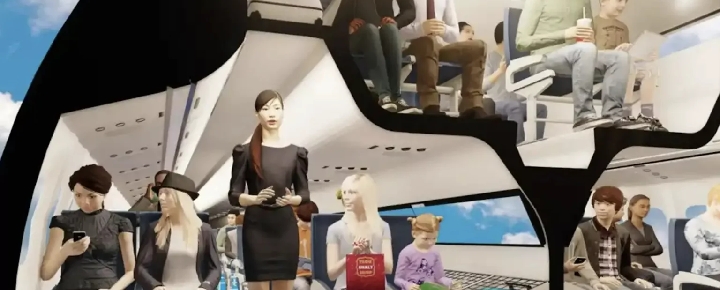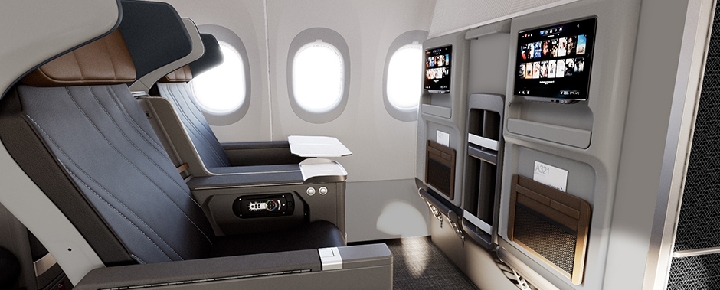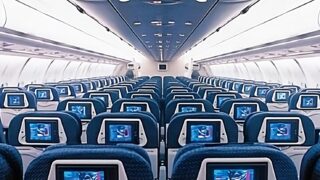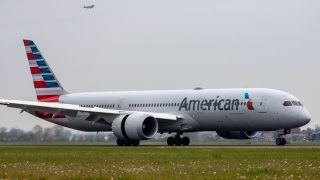Big changes are coming to Hawaii travel, which includes more airline comfort. A range of new designs has been revealed as part of the Crystal Cabin Awards. These annually acknowledge unique designs and new ideas which break the mold on what we can expect on flights to Hawaii in the future. Not all of these will come to fruition, but many do and will. Some of the winners are already in production, and others are arriving as soon as next year (see below).
Passenger solutions have become an even higher priority across the industry than ever before. — Crystal Cabin Awards.
Transcontinental first but Hawaii flights are next.
Regarding domestic travel, two flight regions are most attractive to the airlines. Hawaii routes are some of the greatest distance flights in the US, including the absolute longest ones, which are Boston and New York to Hawaii. Being of significant duration no matter where in the US Hawaii flights start, they are a primary focus for the six airlines that fly to Hawaii, Alaska, American, Delta, Hawaiian, Southwest, and United.
Comfort is recognized as playing an increasingly important role in passenger decisions when purchasing expensive flights to Hawaii and deciding between airlines. We are starting to see more significant changes coming to both economy and premium travel classes, and the airlines are welcoming and undertaking such innovation with a passion we’ve never seen before.


No more middle seats?
This one design struck us as among the most fascinating but perhaps also the hardest to achieve. From the Guatemalan company Taller De Arquitectura T36 comes a unique cabin design that represents a complete reconfiguration of what we see in today’s widebody flights, including 767, 777, 787, A330, and A350 aircraft. What’s so interesting is that it eliminates the dreaded middle seat and has three economy cabins on two levels that all feature 2×2 seating. It also provides virtual windows (seen in the photo) for those not near an actual window. You’ll notice in the design that the economy cabin is split in two on the first level, and one side has no exterior window. That’s where the virtual window comes into play. We’re also seeing virtual windows now on some airlines. Emirates first-class suites in the middle of specific aircraft now have a virtual window to see what’s happening on the outside. Could the end of genuine windows on airliners actually be forthcoming?
Stacked widebody economy seating on two levels.
Not only is it roomier in appearance, but it will be an attractive concept to the airlines because the total number of economy seats is said to increase. We won’t look for this to be a reality in the very short term, and it seems there are a lot of issues to work out. But at some point, we expect to see something like this or the concepts below on flights to Hawaii, especially on the longer routes. The illustration above shows that the two aisles on the first level appear asymetrical in order to make room for the upper deck.
This award-winning new sleeping transformation is about to take flight.


As these trends begin to materialize, we remain mesmerized. On Air New Zealand flights to Honolulu from Auckland, the company will retrofit its Boeing 787 Dreamliners with their new “Skynests,” pictured above. These economy-class beds accommodate up to six people at one time. On those 8-hour flights, they plan for passengers to make reservations in increments of 4 hours. We expect to see these launch as early as 2024, although they have actually been in the works for several years and were delayed.
Ways to get more comfortable in economy.
As the differentiation between costs grows on Hawaii flights, first class/business can sometimes cost up to 10 times or more than the price of economy. The problem that Air New Zealand is addressing here is that sometimes even in the economy cabin, you want to sleep, and you don’t need to include nor wish to pay for every other luxury associated with business/first class.
Air New Zealand says the desire of passengers to sleep in economy is “overwhelming…We have zeroed in on sleep, comfort, and wellness because we know how important it is for our customers to arrive well-rested. We wanted to offer our Economy customers a lie-flat option, and that’s how Skynest was born. It’s going to be a real game-changer for the economy travel experience.” We think that Air New Zealand is right on the money here.
How much will it cost to take a 2-hour nap with Skynest?
The Skynest pod of six bunk beds has the equivalent of an hourly charge, with the price not yet announced. When you buy your economy ticket, you will also be able to reserve a 4-hour period of lie-flat rest. We’re guessing a cost of perhaps $200 per hour.
When the innovation comes to Hawaii flights, the increments might be shorter from the west coast, like two hours. Then longer from the east coast.
While the hourly rates sound like a lot, it will still be far cheaper, for example, than the up to $2,500 or more cost of a one-way business/first-class ticket between Auckland and Honolulu, $2,000 between the west coast and Honolulu, and $2,500 or more between the east coast and Honolulu.
When you add the cost of the rest period to a more reasonably priced economy ticket, it still comes out much cheaper than business class. The concept is intriguing.
Differentiation is growing between airlines, cabins, and offerings to Hawaii.
We already see significant changes in what the airlines offer on flights to Hawaii. Whether it be Hawaiian Airlines’ business class lie-flat seating with a very high-level service component on the current generation A330 aircraft or the new cabana suites on their soon-to-be-delivered Dreamliner fleet. Also, United Airlines highly rated Polaris business class suites, Delta One fully enclosed business suites and American Airlines Dreamliner Flagship Business Suites. And those are just for starters in terms of what’s ahead in all classes of service.
Other innovations coming to Hawaii flights.
The design below is for economy seats that have completely retractable armrests. At present, this is not associated with any airline. Besides how often do we find three seats when we can have the luxury to stretch out?


American Airlines enlists experts as they focus on design innovation.
American Airlines is determined to revamp the future of its long-haul flying with new cabin concepts. The company is partnering with design innovation company Teague. “To help airlines anticipate disruptive innovations that could leave them left behind, Teague conceptualized Poppi: a tech-savvy airline that focuses equally on passenger experience, brand loyalty, and the bottom line.”
New premium economy product from American Airlines.
The design below, for one, addresses issues of the front-row premium economy facing a partition instead of a backrest. The airline looks to incorporate tables and screens into the wall fronting premium economy.


Also from American Airlines is this concept for a new space-saving business class product for its narrow-body fleet, such as the A321 that it flies to Hawaii.


And not to be left out, Hawaii-centric United Airlines was awarded the Crystal Cabin Award for Inflight Entertainment and Connectivity not long ago. That was for their onboard entertainment interface on the carrier’s Boeing 787-10 Dreamliners.
We are fascinated by the airliner changes that will be coming. What about you?
Get Breaking Hawaii Travel News







Why is Air New Zealand Business Class from Hawaii to Auckland so much more expensive than from USA West Coast, if Hawai is almost 50% closer to Auckland than the West Coast?
Hi David.
Pricing is simply supply and demand. As for distance, however, NZ is almost twice the distance as the US mainland is from Hawaii. 4,389 vs. 2,397.
Aloha.
Whilst the elasticity curve and revenue maximization are certainly one factor in pricing; there are a number of other factors such as brand image and ubiquity as well competitive positioning. As you say cost based pricing is historic and some routes are kept as loss leaders if they prevent competitors entering the market.
Hauʻoli hoʻomaikaʻi
Hi Rich.
Thanks for adding that. Much appreciate it. Happy Thanksgiving.
Aloha.
I meant Hawaii is closer to NZ…travel there should be cheaper from Hawaii than from US mainland. Or at least one would think the relative distance would be reflected in a lower price. But not only are prices not less, they are much higher. Amazing. Demand to/from NZ must really impact the price
Absolutely agree with you. We are getting a raw deal.
This is all very interesting and innovative and exciting, but the real question is: when will airlines start offering discrete double occupancy, sound proof lay-flat pods for their “Mile High Club” service? I foresee a great demand for this amenity, and it will be priced accordingly. At least $500 for each 15 minute segment, even more for the Elite Champagne upgrade option. You read it here first.
Airlines have tried to improve comfort over the years but the majority of US customers place price above value. Remember more room throughout Coach from American? So I fear that the Business and First Class improvements may last but the rest will get quietly forgotten as Southwest or some one else offers another give away fare. If it was not prohibited for safety reasons I am sure some carriers would offer standing flights at a discount.